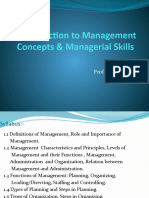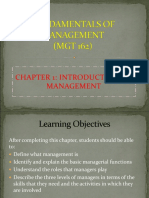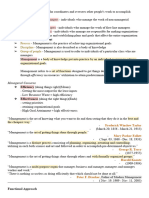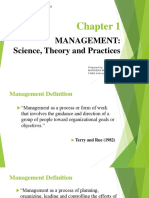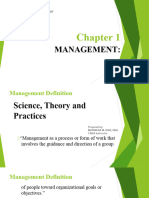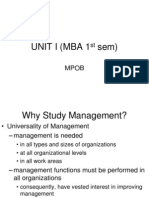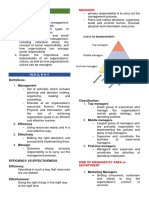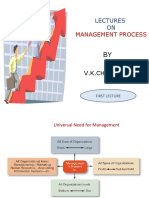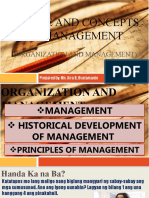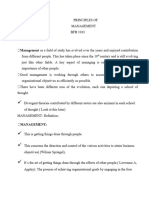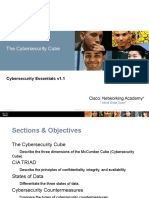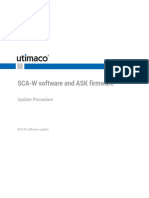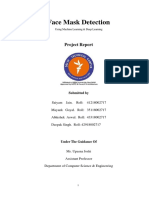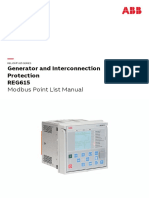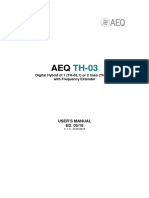0% found this document useful (0 votes)
225 views68 pagesLabman Module 1
The four major management theories are:
1. Scientific Management - Attempts to apply a systematic or scientific approach to studying organizations by examining the functions of complex organizations using a cause-and-effect approach.
2. Bureaucratic Management - Views the organization as a hierarchy with specialized divisions of labor, clear lines of authority, and formal rules/procedures.
3. Human Relations - Focuses on interpersonal aspects and human behavior within organizations, emphasizing that satisfied workers are productive workers.
4. Systems Management - Views the organization holistically and emphasizes coordination between all components for overall effectiveness.
39
- views the organization as a hierarchy with:
2. Bureaucratic
Uploaded by
Julia QuimadaCopyright
© © All Rights Reserved
We take content rights seriously. If you suspect this is your content, claim it here.
Available Formats
Download as PDF, TXT or read online on Scribd
0% found this document useful (0 votes)
225 views68 pagesLabman Module 1
The four major management theories are:
1. Scientific Management - Attempts to apply a systematic or scientific approach to studying organizations by examining the functions of complex organizations using a cause-and-effect approach.
2. Bureaucratic Management - Views the organization as a hierarchy with specialized divisions of labor, clear lines of authority, and formal rules/procedures.
3. Human Relations - Focuses on interpersonal aspects and human behavior within organizations, emphasizing that satisfied workers are productive workers.
4. Systems Management - Views the organization holistically and emphasizes coordination between all components for overall effectiveness.
39
- views the organization as a hierarchy with:
2. Bureaucratic
Uploaded by
Julia QuimadaCopyright
© © All Rights Reserved
We take content rights seriously. If you suspect this is your content, claim it here.
Available Formats
Download as PDF, TXT or read online on Scribd
/ 68

